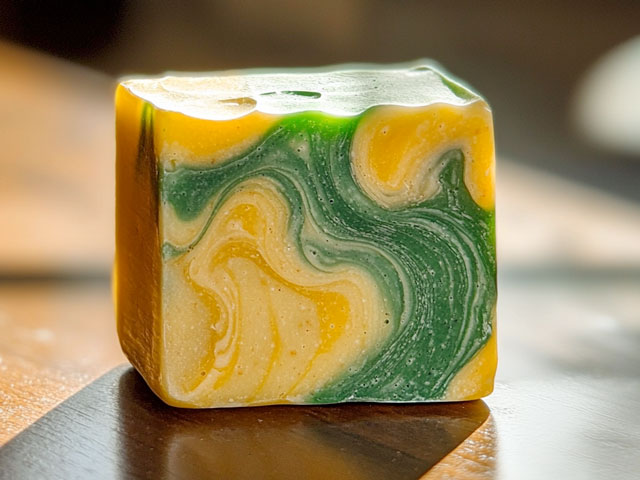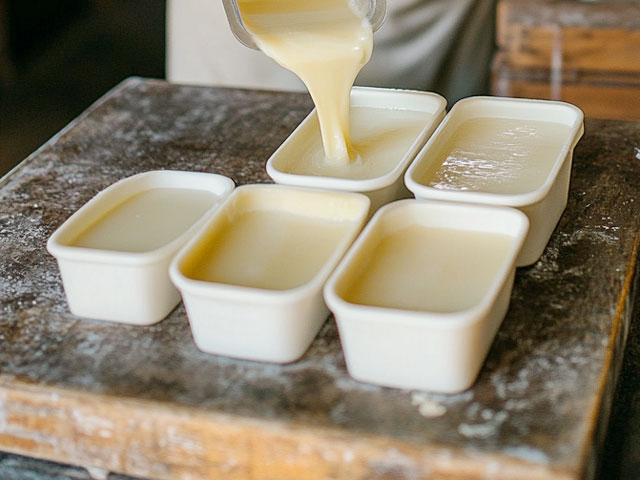How Long Does a Bar of Soap Last?
Though several variables come into play, the average bar of soap (roughly 4 ounces/113 grams) typically lasts between 3-4 weeks with normal daily usage.

Water exposure plays a crucial role. When soap sits in standing water or remains wet between uses, it dissolves more quickly. This is why soap dishes with drainage holes or ridges help extend a bar's life. Add water to a sugar cube and the more it stays in contact, the faster it dissolves.
Usage frequency naturally affects longevity. A household where multiple people (think teenagers) use the same bar of soap will go through it more quickly than a single person. Though debatable, the parts of the body being washed matter, as using soap primarily for hands typically results in less usage than full-body washing. A bar of soap might last one person a lot longer than another based on their personal preferences for hygiene.
The soap's formulation significantly impacts its durability. Soaps with higher water content (like many commercial brands available for purchase) tend to dissolve more quickly than well-cured handmade soaps. The hardness of oils used also matters.soaps made with harder oils like coconut and palm last longer than those made primarily with soft oils like olive oil. For example, Castile Soap is going to decompose differently than a bar of Dove.
Environmental conditions affect soap life too. Harder water areas typically use more soap as the minerals in the water interact with the soap molecules, requiring more product to achieve the same lather. Similarly, warmer shower temperatures accelerate soap dissolution. See, that cold shower is saving you money on both your heating bill and your soap expenses.

How to Create Long-Lasting Soap
The foundation of creating long-lasting soap starts with the careful selection of oils. Think of oils as building blocks - each one brings different properties to your final product. Hard oils like coconut oil, palm oil, and tallow create a more rigid crystal structure in your soap, similar to how building with bricks creates a more durable structure than setting up a teepee. A good starting ratio for durability is about 60% hard oils to 40% soft oils in your formula.
The curing process is equally critical for longevity. During curing, two important things happen. First, excess water evaporates, making the soap harder and more resistant to dissolution. Second, the crystalline structure of the soap continues to develop. Soap makers will be looking at a minimum cure time of about 4-6 weeks.
Another key factor is your superfat percentage. Superfat is the amount of excess oils that don't react with the lye. While a higher superfat (around 5-8%) creates a more moisturizing bar, it can also make the soap softer and quicker to dissolve. For maximum longevity, consider reducing your superfat to 3-4%, though this requires precise measurements to ensure the soap remains skin-safe.
Temperature control during the soap-making process also affects durability. Soaping at lower temperatures (around 100-110°F/38-43°C) typically creates a tighter, more organized crystal structure.
Average Length of Soap Usage
Large bars of soap such as a Duke Cannon Big Ass Bar of Soap last longer than the bar of ivory your grandparents still stock in the vanity under the bathroom sink. Dr. Squath is somewhere in between.
- 3oz = 2-3 weeks
- 4oz = 3-4 weeks
- 5oz = 3.5-4.5 weeks
- 6oz = 4-5 weeks
- 7oz = 4.5-5.5 weeks
- 8oz = 5-6 weeks
How Long Does a Bar of Soap Last Unopened?
That's a great question. It's true, soap does expiere. A handmade bar of soap lasts between 6-12 months. Commercial brand bar soap will last anywhere between 2-3 years, depending on the formula.
Proper saponification methods have a lot to do with expiration dates. Some could even argue soap, like the Wu-Tang Clan, is forever.
Frequently Asked Questions (FAQs)
What affects the shelf life of soap?
- Water Exposure
- Frequency of Use
- Soap's formula
- The environment
How long does Dr. Squatch Bar Soap last?
Dr. Squatch says, "Our soaps last 2-3 weeks on average with daily use." That seems to be a bit less than the average. That said, Dr. Squatch makes some pretty excellent soap.
How long does Irish Spring Soap last?
At ~3oz, a bar of Irish Spring will last roughly 2 to 3 weeks. It might last longer if you leave it out in your house to repel the mice and insects.